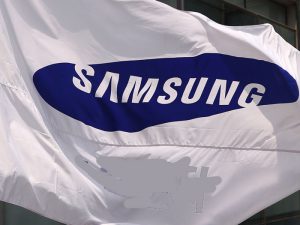
Samsung Heavy books $100 million LNG carrier order
MAY 23, 2017 — South Korea’s Samsung Heavy Industries Co., Ltd. has won a $100 million contract to build two 7,500 cu.m LNG carriers for Kogas. Kogas will use the vessels to

MAY 23, 2017 — South Korea’s Samsung Heavy Industries Co., Ltd. has won a $100 million contract to build two 7,500 cu.m LNG carriers for Kogas. Kogas will use the vessels to
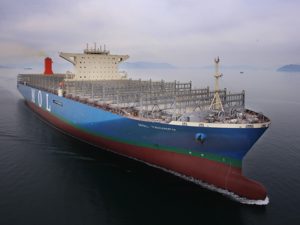
MARCH 16, 2017 — There’s a new holder of the title “world’s biggest containership. Shipbuilder Samsung Heavy Industries, Ltd. yesterday held a naming ceremony at its Geoje, South Korea, shipyard for the
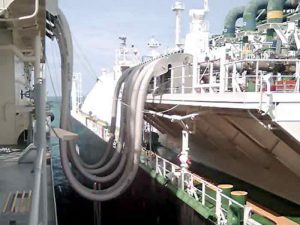
DECEMBER 7, 2016 — Höegh LNG Holdings Ltd. has signed a Letter of Intent with South Korean shipbuilder Samsung Heavy Industries for one firm and three optional floating storage and regasification units
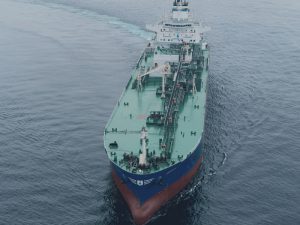
During the pre-SMM 2016 Press Conference on June 2, maritime economist Martin Stopford, Non-Executive President of Clarksons Research Services, said this year shipyards worldwide have experienced the lowest newbuilding orders since the 1980s. Stopford said orders of 14.2 million deadweight tons (dwt) were placed as of the end of April 2016. On an annualized basis that equates to 42 million dwt—the lowest annual rate since 1998 when orders were placed for 37 million dwt of ships. In stark contrast, the average number of ship orders since 2009 has been 94 million dwt.
Shipyards worldwide are expected to deliver about 103 million dwt of ships this year and 88.9 million dwt in 2017.
Stopford provided a perspective on the current weak shipping markets showing the average earnings of tankers, bulkers, containerships, and gas carriers have fallen to levels not see since 2003, according to the Clarksea Index. The average earnings per day in late May fell to $8,900 per day. In 2009, average earnings per day were at $22,000 per day.
There is clearly an overcapacity of ships. He pointed to declining trend in sea trade growth, which is projected at 2 percent this year.
SMART SHIPPING’s THE ANSWER
According to Stopford, one strategy to cope with these difficulties is Smart Shipping. The rapidly evolving information and communications technology (ICT) has enormous potential to improve fleet operations and transport productivity. It will play a crucial part in the survival strategy for shipping, said Stopford.
Stopford outlined the Smart Shipping Toolbox, which includes:
SHIPYARD CAPACITY SHRINKS
Shipyard capacity has been reduced by 20 percent with the closure of 581 “uneconomic” shipyards, but ordering levels for new ships are well below world capacity, says Stopford, so shipyards and marine equipment manufacturers are going to face a challenging year. In 2009, there were 992 active shipyards. Now, there are 423 active yards.
Based on the percentage of ship launches in the year by gross tonnage (GT), Chinese shipyards had 37 percent market share, Korea 35 percent, and Japan, 19 percent.
Korean shipbuilders have been particularly hit by the ordering slump. As we went to press, STX Offshore & Shipbuilding Co., filed for receivership. The shipbuilder could be liquidated or see its debt restructured, depending on what the court decides. STX Offshore & Shipbuilding has been under the control of creditors since 2013. The shipbuilder had losses in excess of 300 billion won last year, and 1.5 trillon won in 2014.
The top three shipbuilders in Korea, Hyundai Heavy Industries, Daewoo Shipbuilding & Marine Engineering, and Samsung Heavy Industries, have all been hurt by the drop in oil prices as oil majors have cut exploration and production expenditures. All three had repositioned themselves towards building higher valued vessels geared towards energy production after the fiscal crisis of 2008 amid competition from much lower cost Chinese shipyard rivals.
There is expected to be consolidation among Korea’s smaller shipyards.
As of mid-March, the Top Five Shipbuilder by Orderbook Value were: HHI, with $24.42 billion, Daewoo, $19.9 billion, China State Shipbuilding, $15.07 billion, Samsung, $10.47 billion, and Japan’s Imabari, with $9.89 billion.
Cruise ship order book swells to $40 billion
Cruise travel continues to grow and expand at a record pace. This year, 24 million passengers are expected to take a cruise vacation this year, up from 23 million in 2015, according to the Cruise Lines International Association (CLIA).
Cruise ship owners are deploying more ships to Australia, China, and Asia to tap into the pent up demand for cruise travel and ordering new ships to accommodate the growth. As of last year, there were 471 cruise ships in service, with 27 new ocean, river and specialty ships scheduled to be deployed this year.
Just last month, Royal Caribbean Cruises Ltd. signed a Memorandum of Understanding (MOU) with French shipbuilder STX France to build a fifth Oasis Class ship for delivery in the spring of 2021 for its Royal Caribbean brand, and two additional Edge-class ships, scheduled for delivery in the fall of each of 2021 and 2022, for its Celebrity Cruises brand.
STX France is completing the design phase of the first prototype 2,900-passenger Edge Class ship and is set to start production this fall for a delivery in fall 2018.
If confirmed, the new construction contracts with STX France would swell the global order book to 59 oceangoing cruise ships, with a total of 176,755 passenger berths. The value of the order book is in excess of $40 billion.
STX France says that, when finalized, the three orders will secure the shipyard’s order book through 2023. Overall, STX would have 12 cruise ships on order, tied with Germany’s Meyer Werft for second most to Italy’s Fincantieri, with 22 cruise ships on order. Meyer Werft’s Finnish yard, Meyer Werft Turku, has six ships on order, with the remainder of the order book divvied up between Germany’s Lloyd Werft, Croatia’s Uljanik and Brodosplit yards, and Japan’s Mitsubishi Heavy Industries.
Not included in those figures is what would be the first cruise ship built in Russia in decades. Last month, Aleksey Rakhmanov, President of Russia’s United Shipbuilding Corporation (USC), says the company was to start construction this year of a cruise ship for an unspecified customer. No further details were available.
The market for river cruise ships is just as strong, with 40 vessels on order. In the U.S., American Cruise Line, Guilford, CT, expects to take delivery of the 170-passenger coastal cruise ship American Constellation in April 2017. The ship is currently under construction at its sister company, Chesapeake Shipbuilding, Salisbury, MD.
Nichols Brothers Boat Builders, Whidbey Island, WA, won a $94.8 million contract to build two 100-passenger, 238 ft coastal cruise ships for Lindblad Expeditions Holdings, Inc. Set for delivery in the second quarter of 2017 and 2018, respectively, the ships will operate between Baja, Costa Rica, and Panama during the winter months and Alaska, Oregon, Washington and Canada in the summer months.

JUNE 9, 2016 — Following a ministerial meeting chaired by Deputy Prime Minister Hwang Woo-yea, the government of South Korea has announced restructuring plans for the shipping and shipbuilding industries and measures
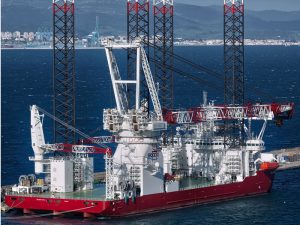
FEBRUARY 23, 2016 — Gibraltar shipyard Gibdock has completed the afloat mobilization of Seajacks Scylla, the largest wind farm installation jack-up ever built. Following delivery to Great Yarmouth, U.K., headquartered Seajacks by
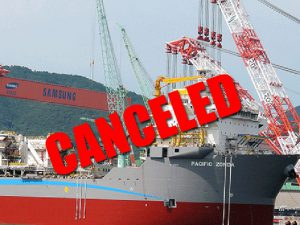
Pacific Drilling S.A. (NYSE:PACD) reports that it has exercised its right to rescind the construction contract for ultra-deepwater drillship Pacific Zonda “due to the failure by Samsung Heavy Industries (SHI) to timely deliver a vessel that substantially meets the criteria required for completion of the vessel in accordance with the construction contract and its specifications.”
Pacific Drilling says it made advance payments totaling approximately $181.1 million under the shipbuilding contract, and will be seeking a refund of the installment payments.
The company inked a contract for the drillship with Samsung Heavy on January 25, 2013 that provided for a delivery date of March 31, 2015.
The cancelation comes after the October 27 news that Fred Olsen Energy had canceled an semisubmersible drilling rig order at Hyundai Heavy Industries and the October 26 announcement that Transocean, Shell ans Daewoo Shipbuilding & Marine Engineering Co. (DSME) had agreed to push back the operating and delivery contracts of two newbuild ultra-deepwater drillships – the Deepwater Pontus and the Deepwater Poseidon – by 12 months each.
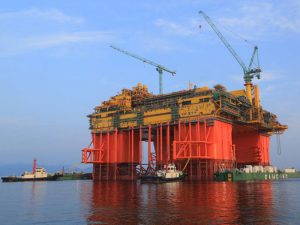
The semi-submersible is the central processing facility (CPF) for the Inpex-operated Ichthys LNG Project offshore Western Australia,
The 150 m x 110 m central processing facility (CPF) processes the product received via flexible risers from production wells, separating it into gas and condensate.
A floating production storage and offloading (FPSO) facility receives the condensate which it stores and offloads onto tankers for shipping and export.
The gas is delivered via pipeline to an onshore gas liquefaction plant that extracts condensate and LPG then cools and liquefies the remaining gas.

Inpex President Director Australia Seiya Ito called the successful launch of the CPF one of the project’s most significant achievements.
“To see this enormous facility in the water is a testament to those who have worked for years to make it a reality,” Mr. Ito said. “This milestone is a clear demonstration that the Ichthys LNG Project is making good progress and that we are working in an excellent spirit of cooperation with our Korean contractors.”
“The operation was completed within two days in the safest conditions,” said Managing Director Ichthys LNG Project Louis Bon. “The CPF is now berthed quayside at the shipyard where work is continuing to lift and install the living quarters and integrate and commission all equipment in preparation for the CPF’s sail away. All teams are working together in a very efficient manner to achieve our next targets.”
Once completed, the CPF will be towed 5,600 kilometers to the Ichthys Field in the Browse Basin, where it will be permanently moored for the life of the Project – more than 40 years.
Time lapse video of CPF under construction
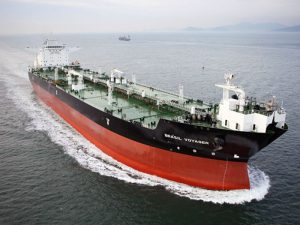
JULY 29, 2015 — All three South Korean shipbuilding giants have now reported massive operating losses. After market close Wednesday, Samsung Heavy Industries reported an operating loss of 1.55 trillion won ($1.3
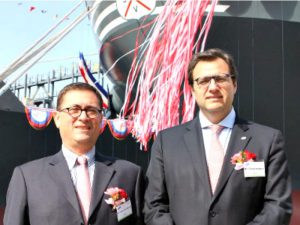
NOVEMBER 1, 2014—The first two of seven 9,300 TEU containerships for Compañía Sudamericana de Vapores (CSAV) were recently christened at Samsung Heavy Industries (SHI) in Geoje, South Korea. The ceremony was attended